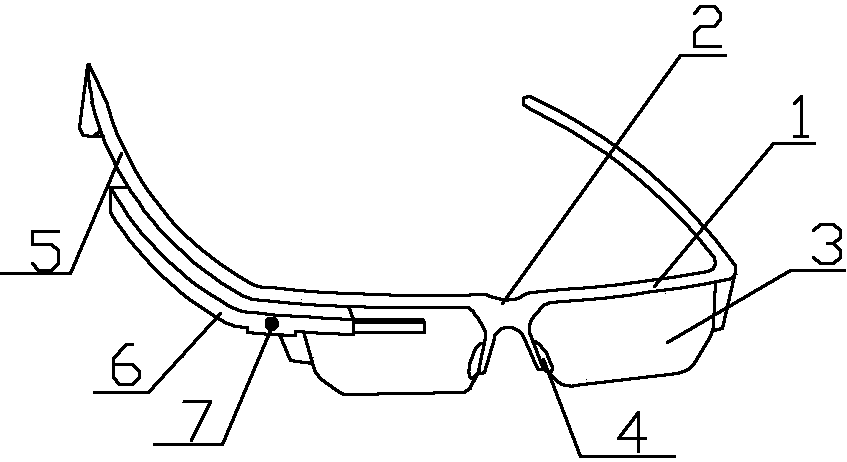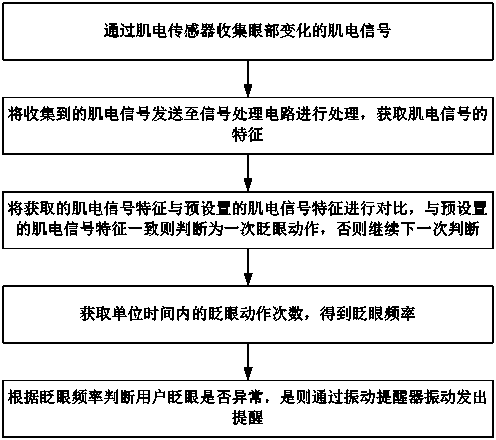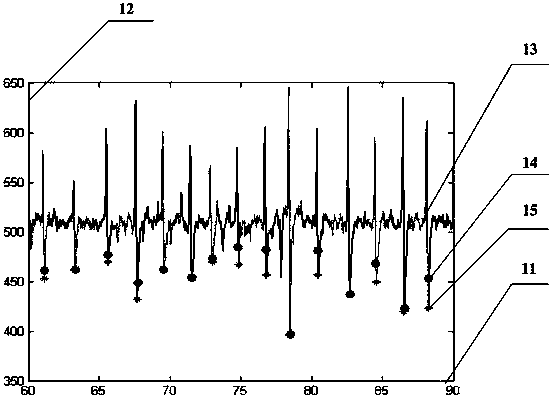Intelligent glasses with blinking detection function and implementation method thereof
A technology of smart glasses and implementation methods, applied in glasses/goggles, diagnostic records/measurement, medical science, etc., can solve the problems of reduced accuracy, complex sensors, and difficulty in integrating glasses, etc., to achieve low complexity and accurate judgment high degree of effect
- Summary
- Abstract
- Description
- Claims
- Application Information
AI Technical Summary
Problems solved by technology
Method used
Image
Examples
Embodiment Construction
[0033] The following will describe in detail with reference to the accompanying drawings in conjunction with the embodiments, so as to further explain the technical features and advantages of the present invention.
[0034] The structure diagram of the present invention is as figure 1 As shown, a kind of smart glasses with blinking detection function comprises a picture frame 1, a mirror bridge 2, a lens 3, a nose pad 4 and a mirror leg 5, and the nose pad 4 and the mirror leg 5 are respectively provided with myoelectric sensors, and the A vibration reminder is set on the mirror bridge 2, and a myoelectric signal processing device 6 and a camera 7 are also set on the mirror foot 5.
[0035] The electromyography sensor is a skin surface electromyography sensor arranged on the skin surface. Generally, its circuit structure is composed of four parts: pre-stage, amplifier stage, notch stage and output stage. Dual T active network. Surface electromyography (sEMG) is a non-statio...
PUM
 Login to View More
Login to View More Abstract
Description
Claims
Application Information
 Login to View More
Login to View More - R&D
- Intellectual Property
- Life Sciences
- Materials
- Tech Scout
- Unparalleled Data Quality
- Higher Quality Content
- 60% Fewer Hallucinations
Browse by: Latest US Patents, China's latest patents, Technical Efficacy Thesaurus, Application Domain, Technology Topic, Popular Technical Reports.
© 2025 PatSnap. All rights reserved.Legal|Privacy policy|Modern Slavery Act Transparency Statement|Sitemap|About US| Contact US: help@patsnap.com



